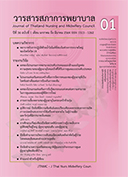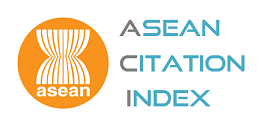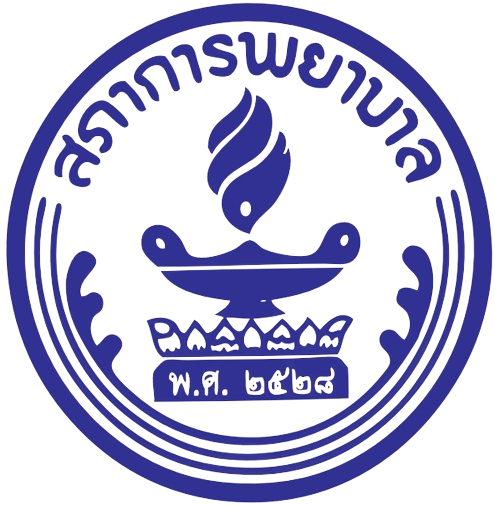ผลของโปรแกรมส่งเสริมการรับรู้สมรรถนะแห่งตนต่อความสามารถในการดูแลตนเองของผู้ที่มีทวารใหม่
คำสำคัญ:
โปรแกรมส่งเสริมการรับรู้สมรรถนะแห่งตน, ความสามารถในการดูแลตนเอง, ทวารใหม่บทคัดย่อ
เพื่อเปรียบเทียบการรับรู้สมรรถนะแห่งตนและความสามารถในการดูแลตนเองของผู้ที่มีทวารใหม่ก่อนและหลังได้รับโปรแกรมส่งเสริมการรับรู้สมรรถนะแห่งตน
การออกแบบการวิจัย: การวิจัยกึ่งทดลองแบบสองกลุ่มวัดก่อนและหลังการทดลอง
การดำเนินการวิจัย: กลุ่มตัวอย่างเป็นผู้ป่วยที่มารับการรักษาด้วยการผ่าตัดเปิดทวารใหม่ ชนิดถาวรแบบนัดล่งหน้าในโรงพยาบาลมหาวิทยาลัยแห่งหนึ่ง คัดเลือกกลุ่มตัวอย่างตามเกณฑ์ที่กำาหนด จัดเข้ากลุ่มทดลองหรือกลุ่มควบคุมด้วยวิธีการสุ่มอย่างง่าย แบ่งเป็นกลุ่มควบคุมที่ได้รับการพยาบาลตามมาตรฐาน 29 ราย และกลุ่มทดลองที่ได้รับโปรแกรมส่งเสริมการรับรู้สมรรถนะแห่งตน 28 ราย รวบรวมข้อมูลโดยใช้แบบสอบถามข้อมูลทั่วไป แบบสอบถามการรับรู้สมรรถนะแห่งตนเกี่ยวกับการดูแลทวารใหม่ และแบบสอบถามความสามารถในการดูแลตนเองเกี่ยวกับทวารใหม่ วิเคราะห์ข้อมูลด้วยสถิติเชิงบรรยาย และการทดสอบที
ผลการวิจัย: 1) คะแนนการรับรู้สมรรถนะแห่งตนของผู้ที่มีทวารใหม่หลังได้รับโปรแกรมส่งเสริมการรับรู้สมรรถะแห่งตนสูงกว่าก่อนทดลอง (p<0.05) และสูงกว่ากลุ่มควบคุมอย่างมีนัยสำาคัญทางสถิติ (p<0.05) 2) คะแนนความสามารถในการด้แลตนเองของผู้ที่มีทวารใหม่หลังได้รับ
โปรแกรมส่งเสริมการรับรู้สมรรถนะแห่งตนสูงกว่ากลุ่มควบคุมอย่างมีนัยสำคัญทางสถิติ (p<0.05)
ข้อเสนอแนะ: พยาบาลและทีมสุขภาพสามารถนำโปรแกรมส่งเสริมการรับรู้สมรรถนะแห่งตนไปประยุกต์ใช้เพื่อส่งเสริมการรับรู้สมรรถนะแห่งตนและความสามารถในการดูแลตนเองในผู้ป่วยที่มารับการผ่าตัดเปิดทวารใหมตั้งแต่ระยะก่อนผ่าตัด ภายหลังผ่าตัด และภายหลังจำาหน่ายออกจากโรงพยาบาล
Downloads
References
Wannawong S. Stoma care. In: Boonpipattanapong T, Wanwong S, editors. Wound and stoma care. Songkhla: Chanmuangkanpim; 2010. p. 55-76. (in Thai)
Pripattananon C. Urinary diversion operation and care. In: Boonpipattanapong T, Wanwong S, editors. Wound and stoma care. Songkhla: Chanmuangkanpim; 2010. p. 31-54. (in Thai)
United Ostomy Associations of America (UOAA). Living with an ostomy [Internet]. 2020 [cited 2020 October 27]. Available from: https://www.ostomy.org/living-with-an-ostomy.
McGee MF. Stomas. JAMA 2016;315:2032.
Department of Medical Record and Statistics. Data of Patients with Stoma Operation in 2019. Bangkok: King Chulalongkorn Memorial Hospital; 2019. (in Thai)
Grant M, McCorkle R, Hornbrook MC, Wendel CS, Krouse R. Development of a chronic care ostomy self-management program. J Cancer Educ 2013;28(1):70-8.
Herlufsen P, Olsen AG, Carlsen B, Nybaek H, Karlsmark T, Laursen TN, et al. Study of peristomal skin disorders in patients with permanent stomas. Br J Nurs 2006;15:854-62.
Burch J. Management of peristomal skin complications. Br J Health Manage 2014;20:264-9.
Wannawong S, Isaramalai S, Kahawong W. Development and evaluation of program for supporting and enhancing care agency on complication prevention among ostomates. The 12th Graduate Research Conference Khon Kaen University, January 28, 2011; 852-61. (in Thai)
Chaleoykitti S, Poonchai S, Sawangchit S, Bandansin J. The way of life among patients with colostomy. The Royal Thai Army Nurses 2013;14(3):31-8. (in Thai)
Bandura A. Self-effcacy: the exercise of control. New York: W.H. Freeman; 1997.
Jayarajah U, Samarasekera DN. A cross-sectional study of quality of life in a cohort of enteral ostomy patients presenting to a tertiary care hospital in a developing country in South Asia. BMC Research Notes 2017;10(1):75.
Pittman JA. Ostomy complication and associated risk factors: development and testing of two instruments [dissertation]. Bloomington: Indiana University; 2011.
Chaudhri S, Brown L, Hassan I, Horgan AF. Preoperative intensive, community-based vs. traditional stoma education: a randomized, controlled trial. Dis Colon Rectum 2005;48:504-9.
Pandey RA, Dhungana SB. Knowledge and practice of stoma care among ostomates at B. P. Koirala Memorial Cancer hospital. Journal of Nobel Medical College 2015;4(1):36-45.
Prasangsit C. Nursing care of patient with colorectal cancer. In: Prasangsit C, Rungsangchan K, Editors. Enterostomal nursing care: experience from experts. Bangkok: Quality Development Nursing Division, Department of Nursing, Faculty of Medicine Siriraj Hospital, Mahidol University; 2015. p. 1-12. (in Thai)
Danielsen AK, Soerensen EE, Burcharth K, Rosenberg J. Learning to live with a permanent intestinal ostomy: impact on everyday life and educational needs. J Wound Ostomy Continence Nurs 2013;40:407-12.
Kim KM, Baek ES, Kang NH, Yoon KE, Bae NY, Cha BK. Effects of self effcacy promoting programs on self effcacy, self care behavior and psychosocial adaptation in patients with a colostomy. J Korean Acad Fundam Nurs 2007;14:288-96.
Cohen J. Statistical power analysis for the behavioral sciences. New York: Academic Press; 1977.
Polit DF, Beck CT. Nursing research: generating and assessing evidence for nursing practice 10th ed. Philadelphia: Wolters Kluwer; 2017.
Teerathongdee K, Ronnarithivichai C, Thongchareon V, Pongthavornkamol K. Factors predicting quality of life in older adult patients with colorectal cancer post stomal surgery. Thai Cancer J 2014;34(2):68- 78. (in Thai)
Cheng F, Xu Q, Dai XD, Yang LL. Evaluation of the expert patient program in a Chinese population with permanent colostomy. Cancer Nurs 2012;35(1):e27-33.
Zhang JE, Wong FK, You LM, Zheng MC, Li Q, Zhang BY, et al. Effects of enterostomal nurse telephone follow-up on postoperative adjustment of discharged colostomy patients. Cancer Nurs 2013;36:419-28.







